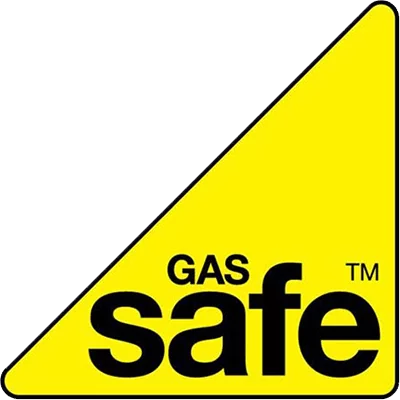Discovering a leak in your property naturally brings up the question: does building insurance cover leaks? In this straightforward guide, we tackle the issue head-on. You’ll learn precisely when building insurance comes to the rescue for leaks and the steps for successful claim filing, without sifting through any fluff.
TL:DR
Building insurance policies typically cover sudden and specific water leak events like burst pipes, but exclude gradual wear and tear or damage from poor maintenance.
Policyholders are encouraged to review their insurance policies annually, understand key terms, and be aware of policy exclusions to effectively file a claim for water leaks.
In case of water damage, homeowners should promptly document the damage, engage professional services for leak detection and repair, and be prepared to work with a loss adjuster to process their insurance claim.
Understanding Building Insurance and Water Leaks

Building insurance typically defines ‘water leaks’ as any damage caused by water to your property, often including issues such as burst pipes or leaking roofs. However, not all types of leaks are covered. For instance, building insurance policies generally do not provide coverage for damage caused by the gradual wear and tear of your property, including your central heating system.
There are certain circumstances where a building insurance claim for a water leak may be rejected. For example, if:
The damage is determined to have occurred gradually
The damage is not linked to a specific event such as a leak or burst pipe
There is insufficient cooperation during the insurer’s investigation
The damage is a result of inadequate maintenance
In these cases, your claim may be denied.
What is typically covered under building insurance?
So, what is typically covered under home insurance cover? The good news is, sudden water leaks, such as those from a central heating system, are generally included in the coverage of building insurance policies.
Not only that, but building insurance policies also generally provide coverage for water damage caused by plumbing leaks. This can include leaks that may occur near a loft trap door, which can be a common issue in many homes.
When might a leak not be covered?
On the flip side, there are certain situations where your building insurance might not provide coverage for water leaks. For instance, if the leaks arise from gradual wear and tear or lack of maintenance, your claim could be denied.
Other common exclusions in building insurance policies for water leaks encompass general wear and tear of the property, frost damage to outside pipes and brickwork, and situations where home emergency cover may be more appropriate.
Evaluating Your Home Insurance Policy for Leak Coverage

With the knowledge of what’s typically covered and what’s not, it’s crucial to review your home insurance policy to determine the extent of coverage for water leaks. Here are the steps to follow:
Start with a comprehensive review of the declarations page, which contains crucial information such as the policy number and property address.
Then, analyze the policy documents in detail to ascertain the extent of coverage.
Familiarize yourself with commonly used terms in home insurance to facilitate a smoother understanding of the policy.
When reviewing your policy for water leak coverage, it is important to focus on key areas including:
Conducting an annual review of your policy with your insurance broker
Clarifying any unclear aspects with your insurance agent
Taking steps to minimize damage from leaks, such as maintaining fixed heating systems
Documenting evidence of the leak
Initiating the claims process with your insurer.
Identifying key terms and conditions
One of the key steps in evaluating your policy is understanding the specific terms and conditions. For instance, the term ‘Escape of water’ is used by insurers to define a claim in which water has escaped and resulted in damage to your home. This encompasses incidents such as burst water pipes and leaks from worn pipe joints and valves.
Another term you might come across is ‘accidental damage’. This is specifically characterized as the sudden and unforeseen harm to your property or contents resulting from an external force, such as a burst pipe or a hot water bottle leaking on your furniture. It is distinguished from damage attributed to normal wear and tear or mechanical failure. To prevent further damage, it’s essential to address these issues promptly.
Understanding policy exclusions
Understanding policy exclusions is also crucial when evaluating your contents insurance coverage. Policy exclusions in insurance terms refer to provisions within an insurance policy that delineate what will not be covered under the contract of insurance.
For instance, water leaks may be excluded from coverage in a building insurance policy due to factors such as:
worn pipe joints
valves
burst pipes
leaking appliances
It’s important to familiarize yourself with such exclusions to avoid unpleasant surprises when filing a claim.
How to File a Water Leak Claim with Your Insurance Provider
Once you’ve discovered a water leak and evaluated your coverage, the next step is to file a claim with your insurance provider. This process typically involves:
Minimizing the damage caused by the leak immediately upon discovery
Documenting the evidence of the damage
Notifying your insurance company about the leak
Arranging for a trace and access service if needed to locate the source of the leak
Undertaking the necessary repairs once the claim is approved
However, it’s not just about filing the claim. As a policyholder, you have certain responsibilities. These include:
Promptly informing the insurance company about the leak
Taking measures to protect the property from additional damage
Furnishing all essential documentation for the claim
Engaging a professional leak detection service to pinpoint the precise origin of the leak, particularly if it is not readily evident.
Documenting the damage
Properly documenting the water leak and the associated damage is a crucial step in the claims process. The documentation serves as evidence to substantiate your insurance claim and demonstrate the severity of the damage. Timely documentation is imperative to mitigate additional damage and bolster your claim.
In order to properly collect and document evidence for an insurance claim, it is advisable to meticulously capture photos and videos of the impacted areas and the source of the leak. This visual documentation plays a crucial role in substantiating your claim. Additionally, repair estimates can play a significant role in the documentation process as they assess the extent of water damage, outline the necessary repairs and restoration, and provide a basis for cost estimation to both the homeowner and the insurance company.
Working with a loss adjuster
During the claims process, you may need to work with a loss adjuster. A loss adjuster’s responsibilities involve:
Thoroughly examining and assessing extensive or complex claims for the insurance company
Determining the extent of damage
Facilitating the claim process.
In order to effectively prepare for communication with a loss adjuster, it is advisable to:
Take proactive measures
Meticulously document all interactions
Promptly address the leak
Gather relevant evidence
Inform your insurance company without delay
Seek additional assistance if necessary
Thorough documentation is crucial for substantiating your claim, so it is essential to record every pertinent detail.
Preventing and Detecting Water Leaks in Your Home

Prevention is always better than cure. There are several measures homeowners can take to prevent water leaks, such as:
Knowing the location of the stopcock
Regularly inspecting for leaks
Ensuring the sump pump is functioning
Keeping gutters clear of debris
Inspecting the roof internally and externally
Checking hoses and faucets
Maintaining clean gutters and downspouts
Trimming trees
Installing a flow-based water leak detection device
Regularly monitoring water pressure
When it comes to detecting water leaks, there are effective tools available. These include listening discs, ground microphones, and advanced leak detection equipment. These tools can help you identify potential issues that may not be visible to the naked eye, ensuring proper maintenance and prevention measures are in place.
Regular maintenance and inspections
Regular home maintenance and inspections are crucial to preventing water leaks and potential damage. Certain parts of the house, such as:
the kitchen
master bedroom
ceiling
toilet
faucets
showerheads
under the sink
water heater tank
basement
water pipes
In freezing temperatures, areas are particularly susceptible to water leaks. Regular maintenance and inspections of the water supply in these areas can aid in preventing potential water damage.
For these inspections, it’s advisable to engage professionals from a local company that specializes in advanced leak detection services. These experts are equipped to identify potential issues that may not be visible to the homeowner, ensuring proper maintenance and prevention measures are in place.
Installing leak detection devices

Installing leak detection devices in your home can be a game-changer. Equipped with sensors placed at potential leak points in a home, these devices enable early detection of leaks, thus preventing extensive damage.
The installation of a water leak detection device typically involves cleaning and preparing the installation surface, positioning the probe or sensors in areas susceptible to leaks, and securely mounting the main monitoring device near these sensors. There are several dependable water leak detection devices available in the market, including Flo by Moen Smart Water Detector and Smart Water Shutoff, D-Link DCH-S161, Phyn Smart Water Sensor, Aqara, Eve, Kidde, Swann, X-Sense, D-Link DCH-S1621KT, Govee Wi-Fi Water Sensors, and YoLink Smart Water.
Repairing Water Leaks and Restoring Your Home

Illustration of professional restoration and repair of water damage
Once a leak has occurred and you’ve filed a claim, the next step is repairing the leak and restoring your home. For this, it’s advisable to engage the services of a professional plumber. The typical home restoration process after a water leak involves:
Inspection
Water extraction
Dehumidification
Sanitation
Potentially reconstruction if there is significant damage.
If the damage is extensive, restoring your home could take anywhere from 1 to 2 weeks. This can be a stressful time, but with the right help and guidance, you can navigate this process successfully.
Professional repairs and restoration
Hiring professional services for repairing water leaks and restoring your home is crucial. A professional service tasked with water leak repair and restoration should have:
Specialized equipment for leak detection
Considerable experience in identifying concealed leaks
Either relevant certifications or a history of favorable customer reviews
In addition to these fundamental qualifications, homeowners should prioritize checking for the following when choosing a professional:
Necessary certifications
Insurance
Years of experience
Expertise of technicians
Additional benefits offered after the service
Reputation for trustworthiness, demonstrated through affiliations with respected organizations such as the IICRC.
Insurance provider requirements
Your insurance provider may have specific requirements when it comes to repairing and restoring your home after a water leak. They have the option to recommend preferred vendors for repairs and restorations. These vendors are willing to work within the approved repair scope at a pre-determined price. However, homeowners have the freedom to choose their own contractor for the repairs, establishing a direct contract between them.
Insurance providers have the authority to specify restoration or repair measures, which may include decisions to repair or replace damaged property, offer a cash settlement, or proceed with full reinstatement of the affected areas. In the event of a denial for a water leak repair claim, it is advisable for the policyholder to request a denial letter in order to gain insight into the reasons behind the decision.
Summary
In conclusion, understanding your building insurance policy and the coverage it provides for water leaks is crucial. While building insurance typically covers sudden water leaks, certain situations such as leaks from gradual wear and tear may not be covered.
Preventing water leaks through regular maintenance and inspections, as well as the installation of leak detection devices, can save you a lot of headaches down the line. Should a leak occur, knowing how to properly file a claim and work with a loss adjuster can greatly ease the process. Hiring professional services for repairing the leak and restoring your home is also key to getting your home back to its original state.
Frequently Asked Questions

Matthew Fowler
The content within this page has been approved by Matthew Fowler


